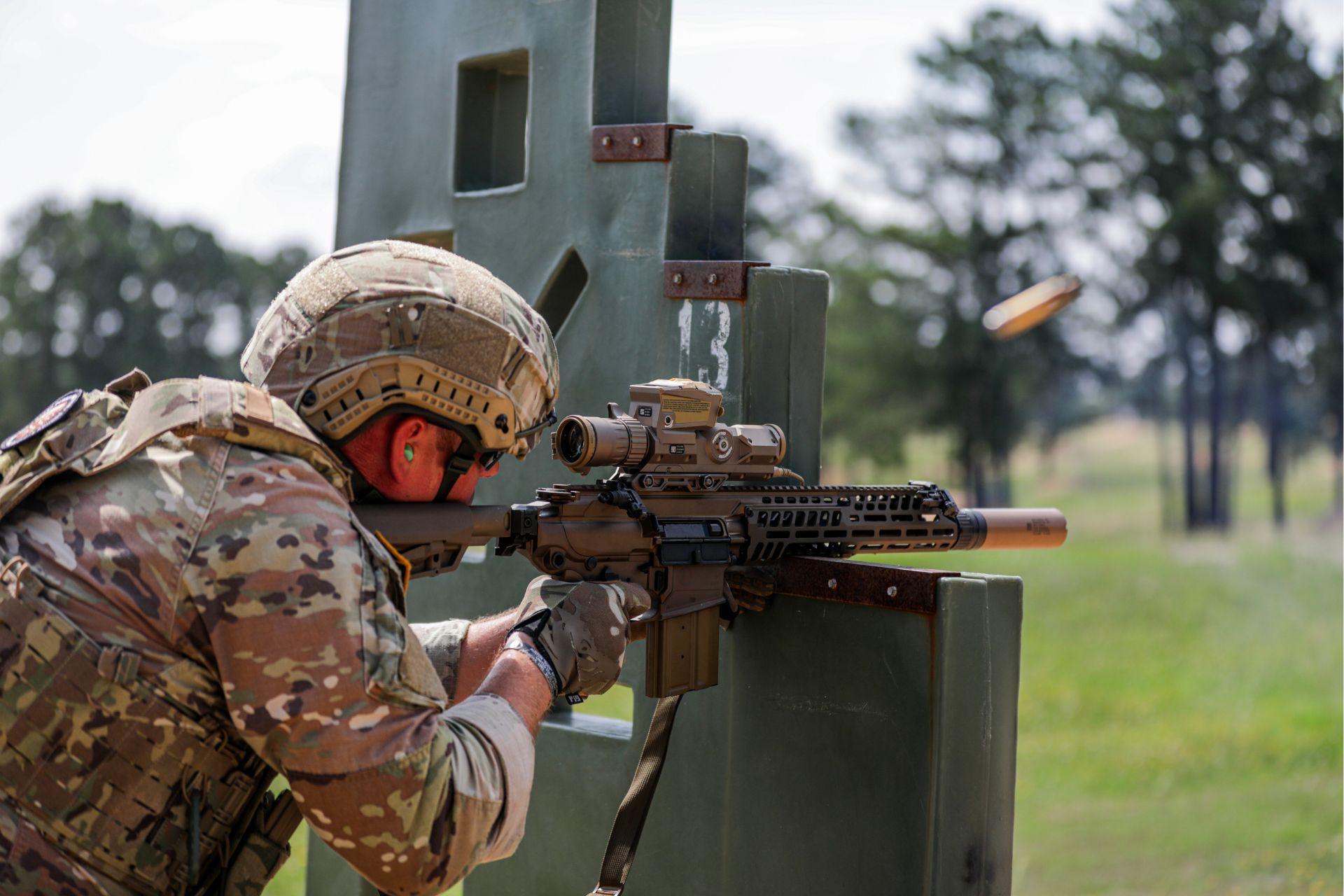Breaking News
NGSW Program A Challenge for NATO Army Interoperability.
The U.S. Army recently implemented one of its most significant reforms in light infantry weaponry by adopting the Next Generation Squad Weapon (NGSW) program. This initiative revolves around the introduction of a new 6.8mm caliber ammunition, designed to replace the standard M4 rifle and the light machine gun SAW. This decision was motivated by the need to adapt the U.S. armed forces to contemporary threats, particularly on modern battlefields where adversaries are increasingly equipped with advanced body armor. However, this technological advancement raises concerns among NATO allies, whose armies have historically aligned around the 5.56mm standard ammunition since 1980.
Follow Army Recognition on Google News at this link

North Carolina National Guard Soldiers from the 30th Armored Brigade Combat Team tested and qualified on the Next-Generation Squad Weapon (NGSW) machine gun, including the XM7 rifle and XM250 light machine gun, at Fort Liberty, N.C., on June 6, 2024. (Picture source: US DoD)
The adoption of the 6.8mm caliber marks a departure from the established practices within the Atlantic Alliance. The 5.56mm SS109 has long been considered the cornerstone of NATO interoperability, allowing allied nations to share not only weapons but also ammunition, facilitating logistics during joint operations. However, the war in Ukraine, which has seen widespread use of body armor by adversarial forces, has highlighted the limitations of this ammunition against modern protection systems. In response, the U.S. military developed a new high-pressure hybrid cartridge system, designed by SIG Sauer, that offers better penetration at longer distances while maintaining a reduced weight. This system thus offers enhanced ballistic performance and greater lethality.
A Paradigm Shift for the U.S. Military
The NGSW program was not born from a mere desire for technological change but rather from a strategic need. In a 2017 Senate hearing, General Mick Bednarek made it clear that 5.56mm ammunition no longer effectively neutralized enemies equipped with L2-L3 level body armor, a standard becoming more prevalent among U.S. military adversaries. The goal of the NGSW program is to provide overmatch capabilities to U.S. forces, allowing them to maintain an advantage over adversaries in terms of range and penetration. The new 6.8mm ammunition was designed to address these emerging threats, based on a thorough analysis of potential targets and battlefield requirements.
The approach taken by the U.S. — starting with the threat, then designing the ammunition, and finally the weapon — represents a break from the usual practices of many NATO governments. Within NATO, it is common for ammunition in service to have a long life span, making replacement challenging. The longevity of the 5.56mm caliber is a prime example. In 1980, this ammunition was adopted for its practical battlefield advantages, notably its lighter weight, which allowed soldiers to carry more rounds and reduced felt recoil. But battlefield evolutions, where more sophisticated body armor is increasingly used, have shown that the 5.56mm has reached its limits, particularly against modern armor.
Challenges for NATO Interoperability
For NATO, the shift to the 6.8mm caliber is not without consequences. Interoperability, a central concept of the military alliance, relies on compatible weapon and ammunition systems across member states. The introduction of a new ammunition standard could disrupt this delicate balance. If some countries choose to follow the U.S. example and adopt the 6.8mm, others might opt to keep their current 5.56mm systems, creating heterogeneity within the alliance.
The issue of interoperability goes beyond just ammunition compatibility. The NGSW program also introduces changes in the weapon systems themselves. The new weapons developed under this program, such as the MCX Spear, are specifically optimized to function with SIG Sauer’s hybrid ammunition. This means that NATO forces would need not only to consider changing ammunition but also modernizing their weapons platforms to fully utilize the capabilities offered by the 6.8mm caliber. This change would involve significant costs and require deep coordination among allied nations.
Moreover, the logistical aspect of such a change cannot be overlooked. Supply chains, training centers, and maintenance protocols would need to be adjusted to integrate these new technologies. Each NATO member country will have to assess whether it is ready to invest in this transition or maintain its existing systems. For now, the 6.8mm caliber is exclusive to the U.S., with the hybrid cartridge being under the direct control of the U.S. Department of Defense and SIG Sauer. This exclusivity makes it even more challenging for other NATO nations to adopt this caliber.

Soldiers from the 4th Battalion, 118th Infantry Regiment, South Carolina Army National Guard, trained on the new XM7 and XM250 Next Generation Squad Weapons at Fort Stewart, Georgia, as part of the third Army National Guard unit to receive these systems, replacing the M4 and M249 (Picture source: US DoD)
A Long-term Reflection
The introduction of the 6.8mm caliber into U.S. forces raises a fundamental question: should NATO also revise its ammunition standards? Each country will need to assess its situation regarding this new technology. The U.S. decision is clear: given the rise of modern threats, a change is necessary. But for other NATO members, the decision to adopt this new standard is far from straightforward. It is likely that several governments will wait to see the concrete results of the initial NGSW deployments before making a definitive decision.
Concerns over interoperability are real and well-founded. Adopting a new caliber within NATO would require a complete overhaul of training, logistics, and deployment systems. Some countries may opt for a conservative approach, preferring to keep their 5.56mm systems, while others might be tempted by the promise of enhanced capabilities offered by the 6.8mm.
In conclusion, the U.S. initiative with the NGSW has the potential to reshape NATO's armed forces architecture. However it also presents significant challenges, especially concerning interoperability and logistics. The future of this transition will largely depend on the decisions NATO allies make in the coming years.


























